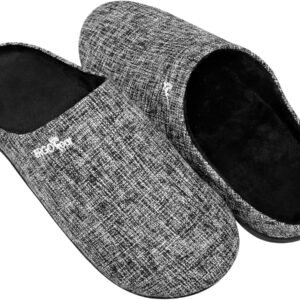In today’s world, where environmental consciousness is paramount, the concept of sustainability extends beyond our daily habits to encompass every aspect of our lives, including the furniture we choose for our homes. As the website giaithichtengoi.com aptly points out, “Sustainability isn’t just a trend; it’s a responsibility.” This responsibility extends to selecting furniture that minimizes its environmental impact throughout its lifecycle – from sourcing materials to manufacturing, use, and disposal. This article delves into the definition and characteristics of eco-friendly furniture, exploring the materials, manufacturing processes, and design considerations that contribute to its sustainability.
Defining Eco-Friendly Furniture
Eco-friendly furniture, also known as sustainable furniture, encompasses pieces crafted with a commitment to minimizing environmental harm. It goes beyond simply using recycled materials; it’s a holistic approach that considers the entire production process and the furniture’s lifespan. This includes responsible sourcing of raw materials, energy-efficient manufacturing techniques, minimizing waste, and designing for durability and longevity. The ultimate goal is to create furniture that is both aesthetically pleasing and environmentally responsible.
Key Characteristics of Eco-Friendly Furniture
- Sustainable Materials: This is the cornerstone of eco-friendly furniture. Sustainable materials are sourced responsibly, minimizing deforestation, habitat destruction, and the use of harmful chemicals. Examples include:
- Recycled wood: Reclaimed wood from demolished buildings or repurposed materials reduces reliance on newly harvested timber.
- Bamboo: A rapidly renewable resource that requires minimal water and pesticides.
- Cork: A sustainable and naturally renewable material harvested from cork oak trees without harming the trees.
- Recycled metal: Utilizing recycled steel, aluminum, or other metals significantly reduces energy consumption compared to producing new metal.
- Organic cotton: Grown without harmful pesticides and fertilizers, providing a natural and sustainable textile option.
- Seagrass: A fast-growing, durable, and naturally renewable material perfect for upholstery and other applications.
- Hemp: A strong, durable, and rapidly renewable fiber that can be used for fabrics and other components.
- Manufacturing Processes: Eco-conscious manufacturers prioritize energy-efficient production methods and reduce waste. This can include:
- Low-emission manufacturing: Utilizing techniques and equipment that minimize greenhouse gas emissions.
- Water conservation: Implementing processes that reduce water consumption during manufacturing.
- Waste reduction: Minimizing material waste through efficient design and manufacturing techniques.
- Renewable energy: Powering manufacturing facilities with renewable energy sources like solar or wind power.
- Durability and Longevity: Eco-friendly furniture is often designed for long-term use. High-quality materials and robust construction ensure the furniture lasts for many years, reducing the need for frequent replacements and minimizing waste.
- Ethical Labor Practices: Eco-conscious furniture manufacturers prioritize fair wages, safe working conditions, and ethical treatment of their employees throughout the supply chain.
- Biodegradability and Recyclability: At the end of its lifespan, eco-friendly furniture should be easily biodegradable or recyclable, minimizing its environmental impact. Designers often incorporate components that can be easily separated for recycling.
- Low VOCs (Volatile Organic Compounds): Eco-friendly furniture avoids or minimizes the use of paints, finishes, and adhesives that release harmful VOCs into the air, contributing to better indoor air quality.
- Certifications and Labels: Look for certifications and labels from reputable organizations that verify the furniture’s eco-friendly credentials. These certifications provide assurance that the product meets specific environmental standards.
The Environmental Impact of Traditional Furniture
Understanding the environmental impact of traditional furniture manufacturing provides a valuable context for appreciating the benefits of eco-friendly alternatives. Traditional furniture production often relies heavily on:
- Deforestation: The logging industry contributes significantly to deforestation, leading to habitat loss, biodiversity reduction, and soil erosion.
- Harmful Chemicals: Many conventional furniture manufacturing processes involve the use of harmful chemicals in paints, finishes, and adhesives, which can release VOCs, impacting air quality and human health.
- Energy Consumption: Manufacturing furniture requires significant energy, often from non-renewable sources, contributing to greenhouse gas emissions.
- Waste Generation: Traditional furniture manufacturing often generates substantial waste, including wood scraps, packaging materials, and production byproducts.
- Unethical Labor Practices: Some manufacturers in the traditional furniture industry engage in unethical labor practices, such as low wages, unsafe working conditions, and child labor.
Choosing Eco-Friendly Furniture: A Practical Guide
Selecting eco-friendly furniture involves careful consideration of several factors:
- Research Brands and Manufacturers: Investigate the company’s commitment to sustainability, their sourcing practices, and manufacturing processes. Look for transparency in their operations.
- Examine Materials: Pay close attention to the materials used in the furniture. Look for sustainable options like bamboo, recycled wood, or organic cotton.
- Check for Certifications: Look for certifications from reputable organizations that verify the furniture’s eco-friendly credentials, such as Forest Stewardship Council (FSC) certification for wood products.
- Assess Durability and Design: Choose durable and well-constructed furniture designed to last. A piece that will serve you for many years is inherently more sustainable than one that needs frequent replacing.
- Consider the Entire Lifecycle: Think about the furniture’s entire lifecycle – from its production to its disposal. Opt for furniture that is easily recyclable or biodegradable at the end of its useful life.
- Support Local and Artisan Businesses: Supporting local or artisan furniture makers often means supporting sustainable practices and reducing transportation emissions.
- Buy Used or Refurbished Furniture: Giving pre-owned furniture a new home is a highly sustainable choice, reducing demand for new products and minimizing waste.
The Long-Term Benefits of Eco-Friendly Furniture
Investing in eco-friendly furniture offers numerous long-term benefits beyond its environmental impact:
- Improved Indoor Air Quality: Eco-friendly furniture minimizes the release of harmful VOCs, resulting in cleaner and healthier indoor air.
- Enhanced Durability and Longevity: Sustainable furniture is often built to last, providing years of reliable use.
- Aesthetic Appeal: Many eco-friendly furniture pieces boast unique designs and natural aesthetics.
- Positive Environmental Impact: By choosing eco-friendly furniture, you contribute to preserving forests, protecting biodiversity, and reducing carbon emissions.
- Support for Ethical Businesses: Purchasing eco-friendly furniture supports businesses committed to sustainable and ethical practices.
In conclusion, eco-friendly furniture represents a conscious and responsible choice for individuals committed to minimizing their environmental footprint. By understanding the key characteristics of sustainable furniture and making informed choices, consumers can contribute to a more sustainable future, one piece of furniture at a time.





